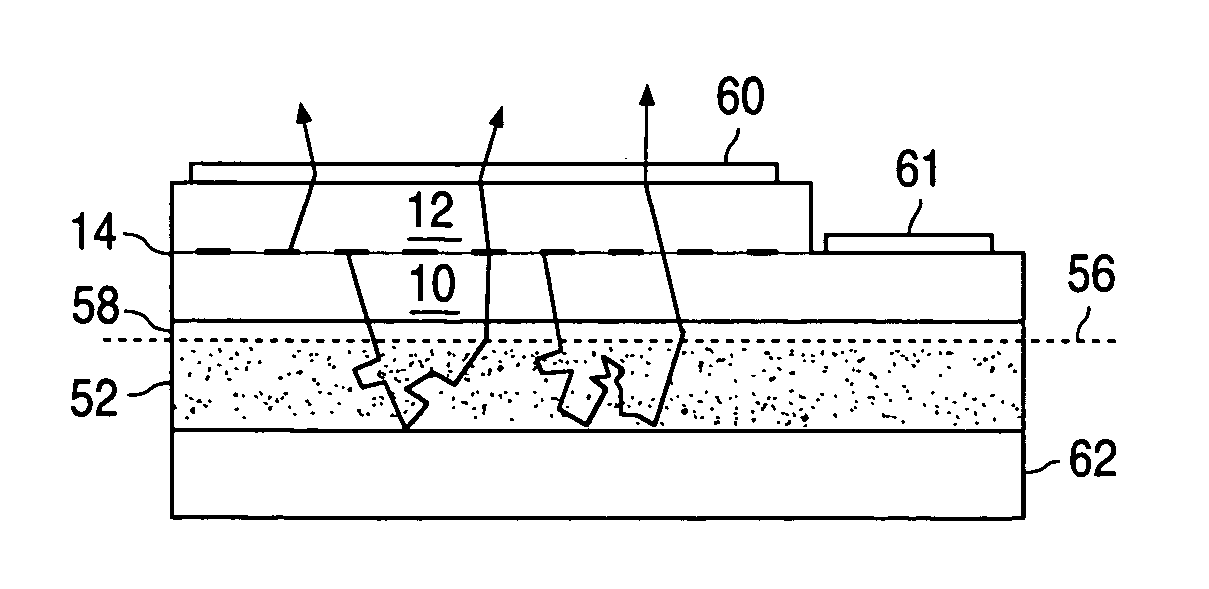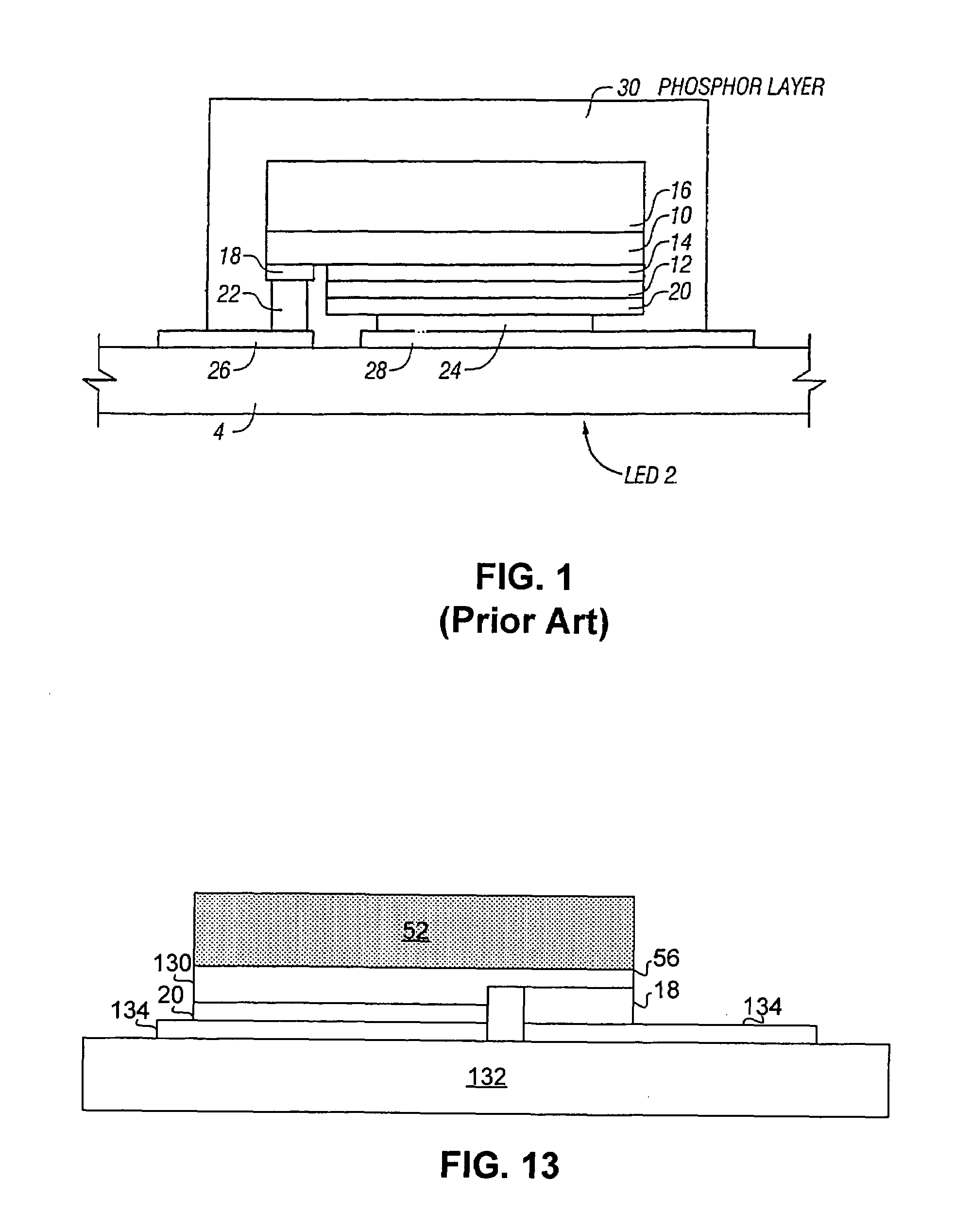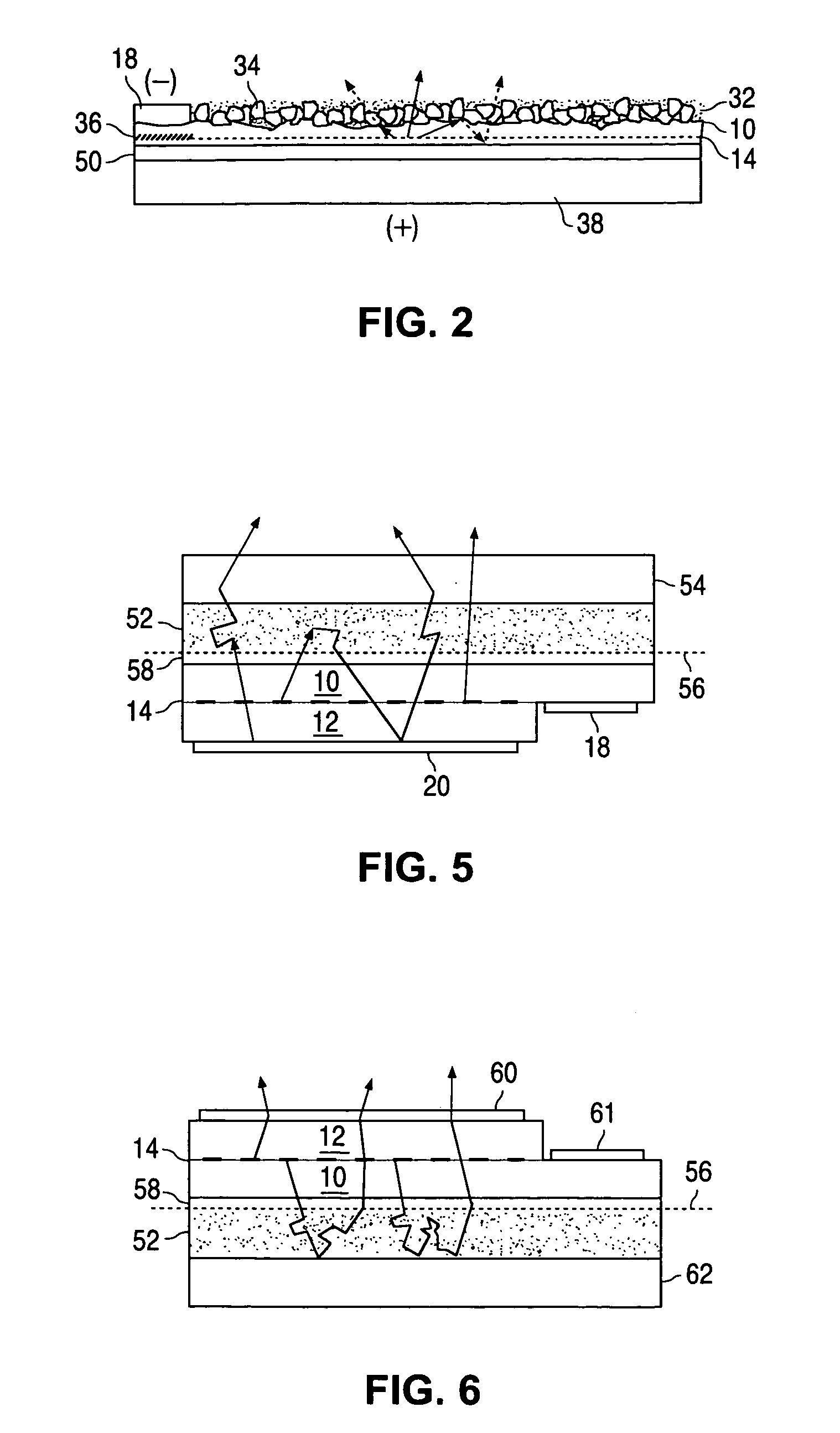Wavelength-converted semiconductor light emitting device
a light-emitting device and wavelength-converting technology, which is applied in the direction of solid-state devices, basic electric elements, electrical appliances, etc., can solve the problems of significant light attenuation, poor extraction efficiency, and inability to completely eliminate optical losses, etc., to achieve efficient extraction of light from the light-emitting region, high efficiency, and high absorbency
- Summary
- Abstract
- Description
- Claims
- Application Information
AI Technical Summary
Benefits of technology
Problems solved by technology
Method used
Image
Examples
Embodiment Construction
[0017]The prior art device illustrated in FIG. 1 includes a layer 30 bearing a phosphor. Phosphors are luminescent materials that can absorb an excitation energy (usually radiation energy), then emit the absorbed energy as radiation of a different energy than the initial excitation energy. State-of-the-art phosphors have quantum efficiencies near 100%, meaning nearly all photons provided as excitation energy are reemitted by the phosphor. State-of-the-art phosphors are also highly absorbent. If a light emitting device can emit light directly into such a highly efficient, highly absorbent phosphor, the phosphor may efficiently extract light from the device, reducing the optical losses described above.
[0018]The device illustrated in FIG. 1 does not exploit these properties of phosphor. In the device illustrated in FIG. 1, substrate 16 separates phosphor layer 30 from the III-nitride device regions 10, 12, and 14. As described above, much light is trapped within the semiconductor layer...
PUM
| Property | Measurement | Unit |
|---|---|---|
| thickness | aaaaa | aaaaa |
| pressure | aaaaa | aaaaa |
| temperature | aaaaa | aaaaa |
Abstract
Description
Claims
Application Information
 Login to View More
Login to View More - R&D
- Intellectual Property
- Life Sciences
- Materials
- Tech Scout
- Unparalleled Data Quality
- Higher Quality Content
- 60% Fewer Hallucinations
Browse by: Latest US Patents, China's latest patents, Technical Efficacy Thesaurus, Application Domain, Technology Topic, Popular Technical Reports.
© 2025 PatSnap. All rights reserved.Legal|Privacy policy|Modern Slavery Act Transparency Statement|Sitemap|About US| Contact US: help@patsnap.com



